

East Mariana Islands Offshore
Mariana Oceanic Trench
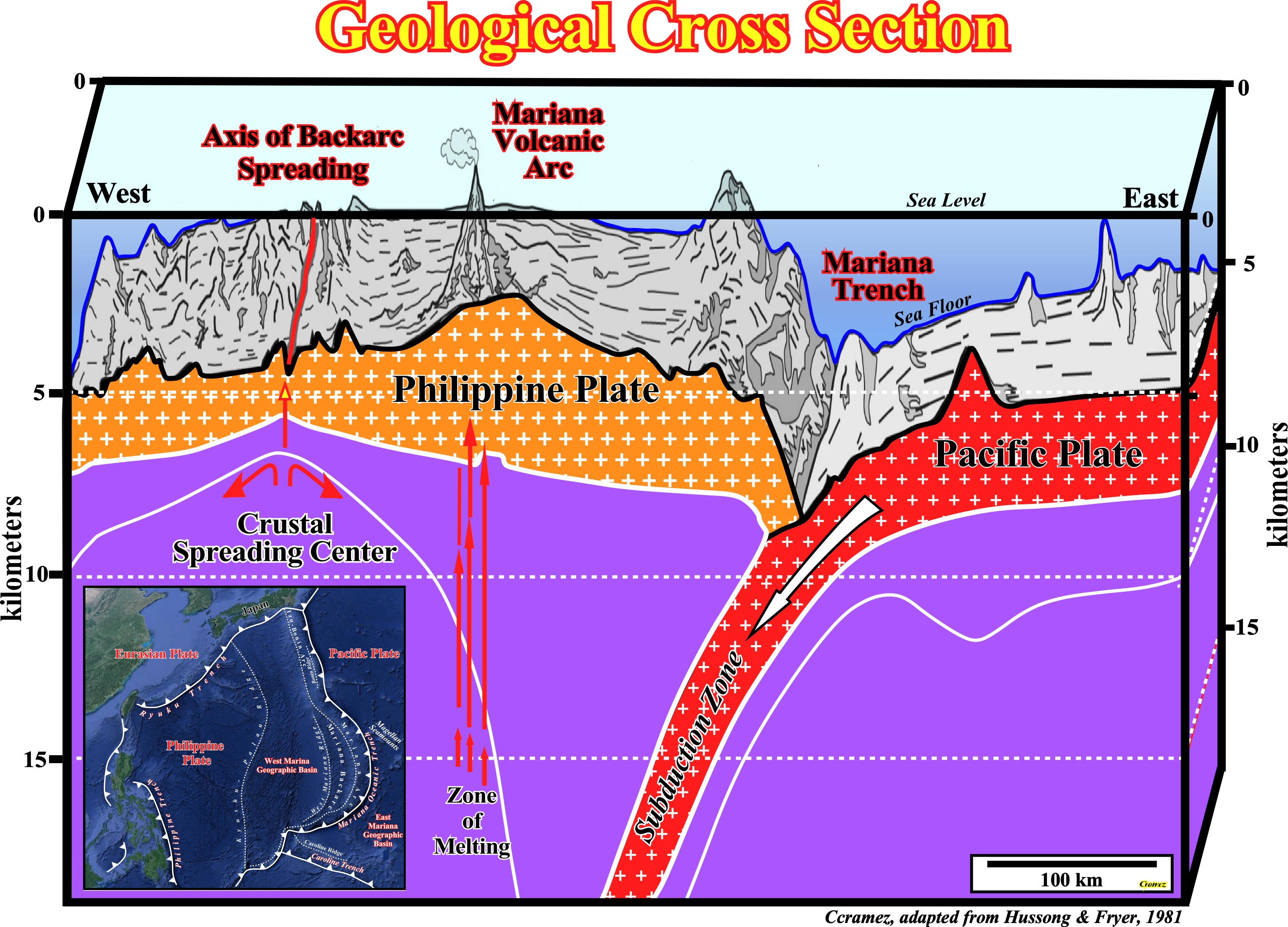
The Mariana Trench is part of a global network of deep troughs that cut across the ocean floor. It was formed, as illustrated on this geological sketch, when the Pacific lithospheric and the Philippine lithospheric plates collide, that is to say, that at the collision point, the Pacific plate (descending plate) plunge beneath the Philippine plate (overriding plate ) into the Earth’s mantle. Attention to the terms "collide " and "collision" here used, since in the plate tectonics and unlike the collision of a car against a wall, the kinetic energy plays no important role, i.e., in the plate tectonics there is no transformation of kinetic energy in strain energy. The depths of the Mariana Trench were first plumbed in 1875, during the first global oceanographic cruise, as more or less eight kilometers, using a weighted sounding rope. However, in 1951, the British vessel H.M.S. Challenger II returned to the spot with an echo-sounder and measured a depth of nearly 11 kilometers.
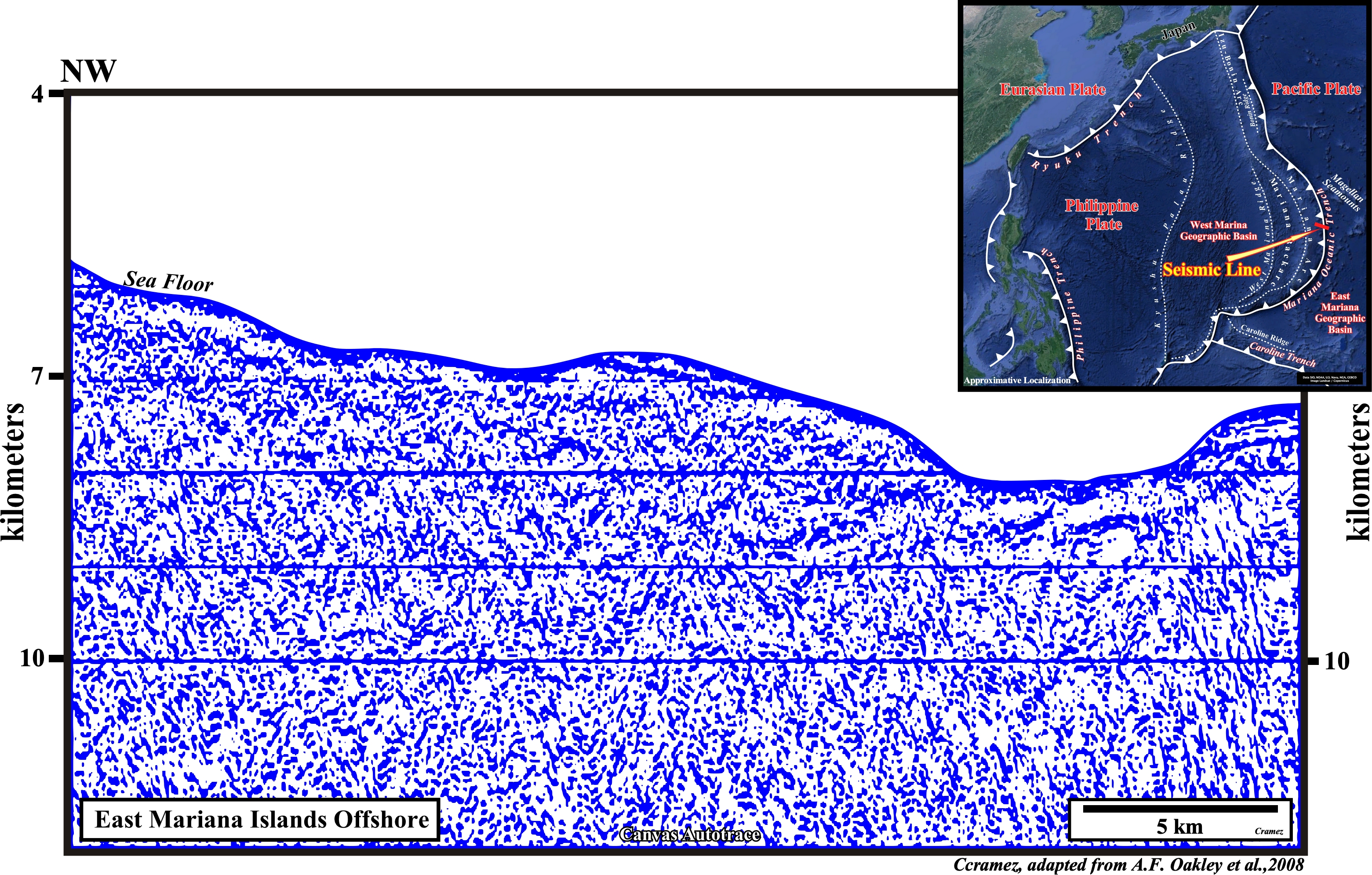
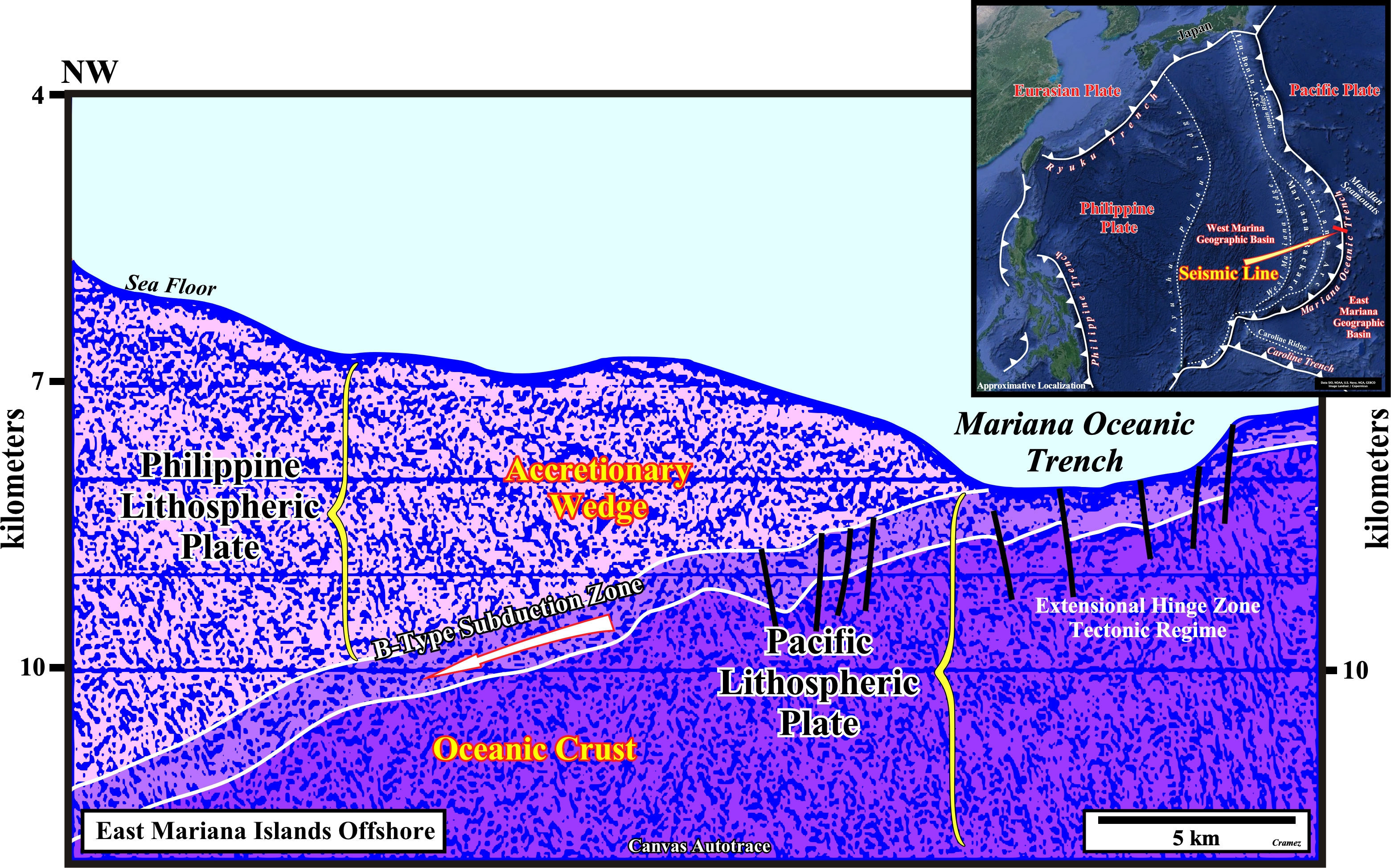
On this Canvas autotrace, the Mariana trench is evident, as well a the two lithospheric plates forming the B-type subduction. The Pacific plate is the descending plate and the Philippine plate is the overriding plate in which an accretionary wedge is formed. The shortening of the accretionary wedge contrasts with the lengthening of the Pacific plate near the hinge of the descending plate which emphasizes the Mariana trench, which is not always so clear as illustrated o the next Canvas autotrace.
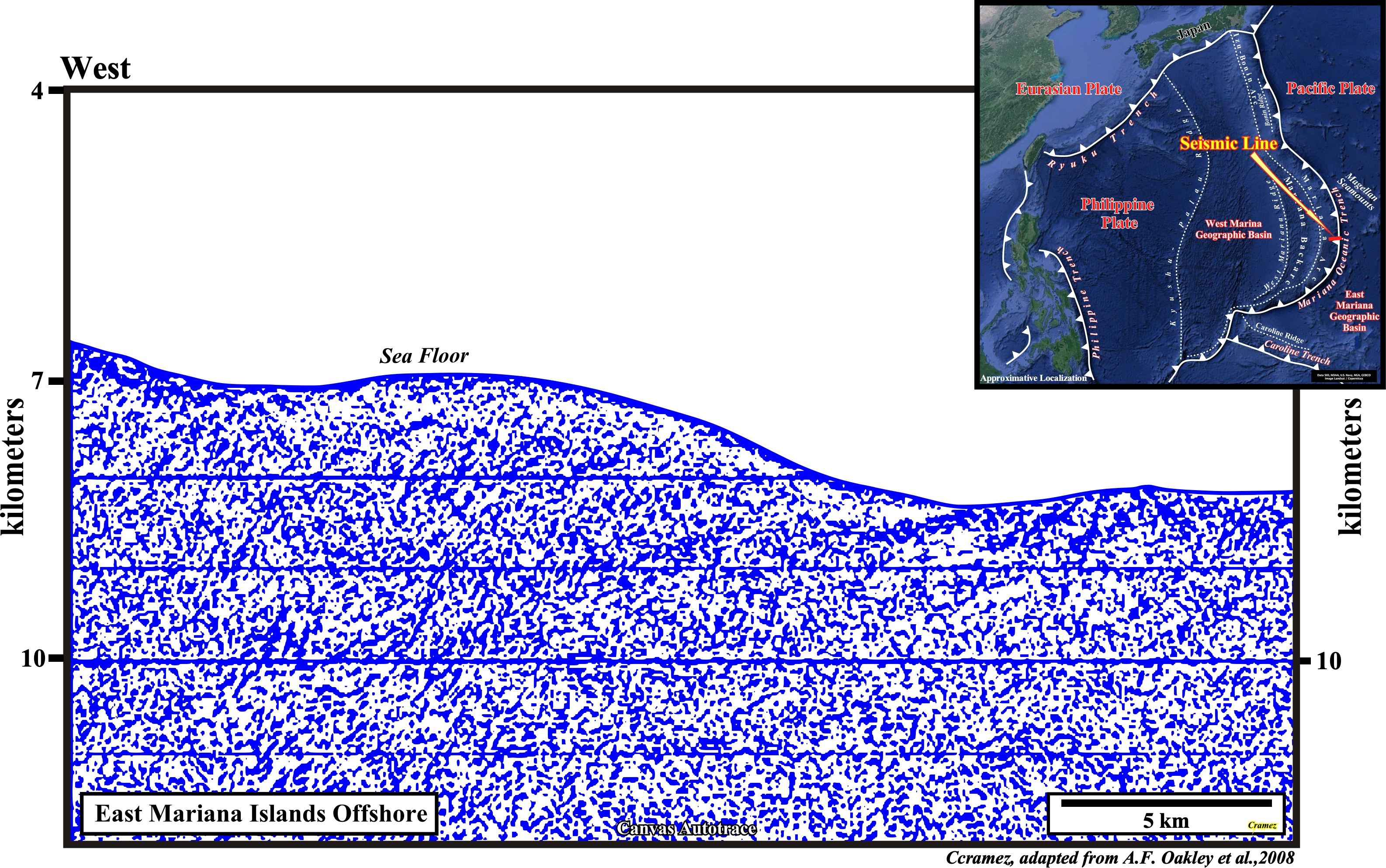
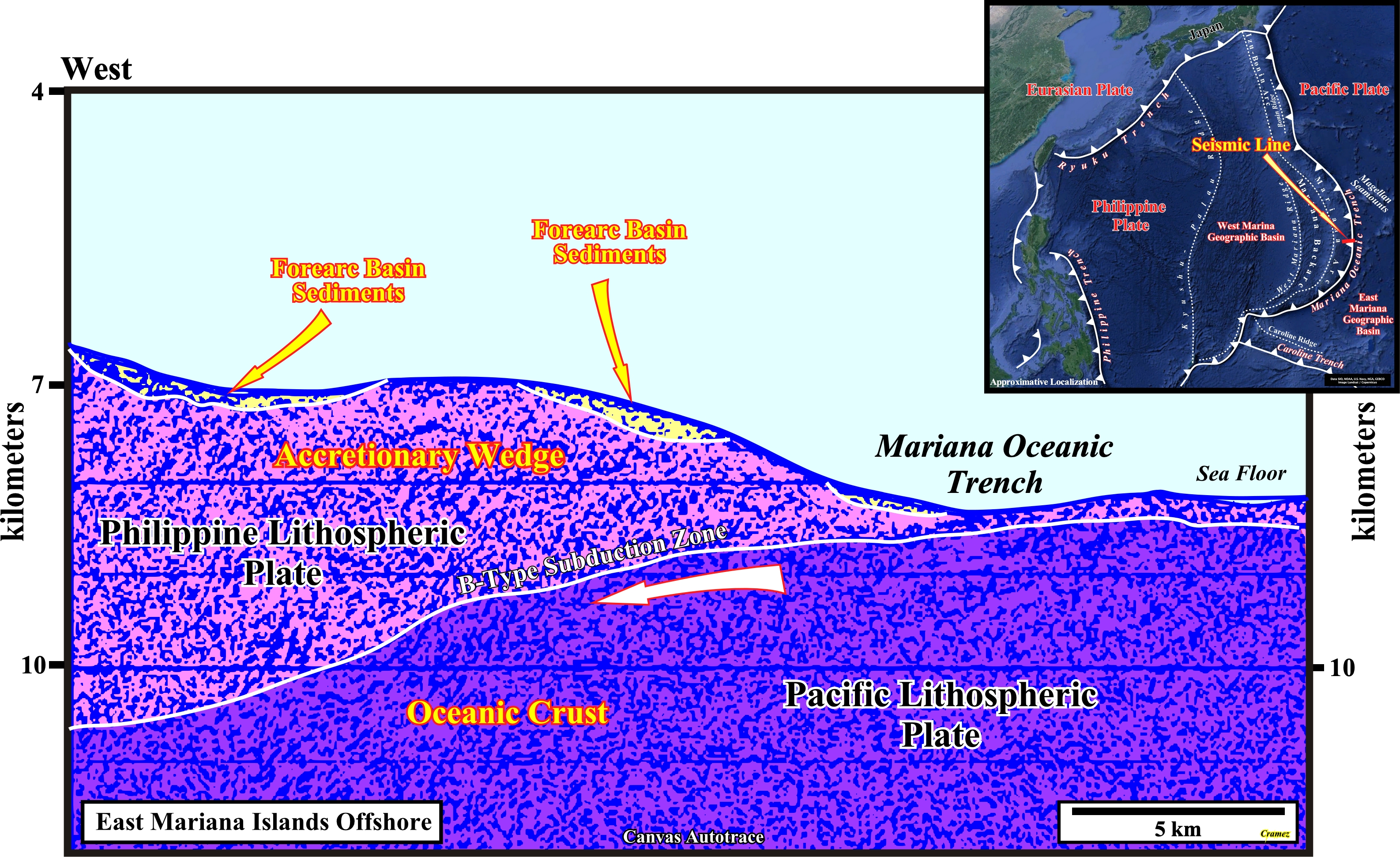
Here, the Mariana trench is not enhanced by the extensional tectonic regime associated to the hinge area of the descending lithospheric plate (Pacific Plate). On the contrary, in the overriding plate (Philippine plate), not only the accretionary wedge is well recognize, but forearc sediments as well. In fact, in the forearc area (region between the subduction zone and the volcanic chain or volcanic arc), generally we find the forearc basin, the outer-arc high, the accretionary wedge (located at the slope of trench break where there is a significant decreased slope angle) and the trench itself. Between the trench break and the volcanic arc, a forearc sedimentary basin filled with erosive material from the volcanic arc and substrate can be developed overlying the thrust faults of the accretionary wedge.
Send E-mails to carlos.cramez@bluewin.ch with comments and suggestions to improve this atlas.
Copyright © 2001 CCramez
Last update:
2022